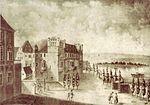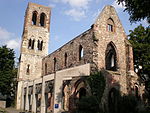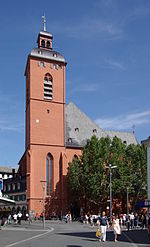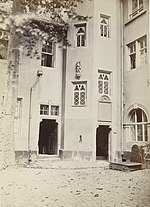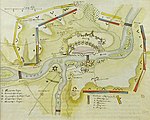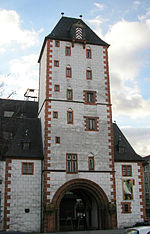Arsenal, Mainz
ArsenalsBuildings and structures completed in 1605Buildings and structures in MainzOffice buildings in GermanyRenaissance architecture in Germany ... and 1 more
Tourist attractions in Mainz

The Old Arsenal (Altes Zeughaus), also referred to as Zum Sautanz, was the central arsenal of the fortress of Mainz during the 17th and 18th century. In his function it was succeeded by the new arsenal. Currently the renaissance building is used by the Rhineland-Palatinate state chancellery and the Landtag of Rhineland-Palatinate.
Excerpt from the Wikipedia article Arsenal, Mainz (License: CC BY-SA 3.0, Authors, Images).Arsenal, Mainz
Deutschhausplatz, Mainz Altstadt
Geographical coordinates (GPS) Address External links Nearby Places Show on map
Geographical coordinates (GPS)
| Latitude | Longitude |
|---|---|
| N 50.004444444444 ° | E 8.2719444444444 ° |
Address
Altes Zeughaus
Deutschhausplatz 8
55116 Mainz, Altstadt
Rhineland-Palatinate, Germany
Open on Google Maps


